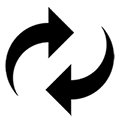Focal Lenses - Types and Applications
Overview
What you will learn
In this guide, you will learn about the different lenses that can be applied to your laser. We will cover the range of lenses generally used and for what applications they work best for.
When to do this
This guide is intended for beginners first receiving and/or working with different lens types with their machine. Be sure to thoroughly read this guide prior to working with a different lens type.
Introduction
Understanding the fundamentals of focusing with your CO2 engraving laser is crucial for achieving the most optimal results. Both the type and focal length of the lens used can significantly affect laser performance or are situational for where they work best. This guide will explore the basics of laser focusing, including the effects of focal length and lens diameter, as well as the driving concepts involved.
Lens Physics
Inverse Square Law
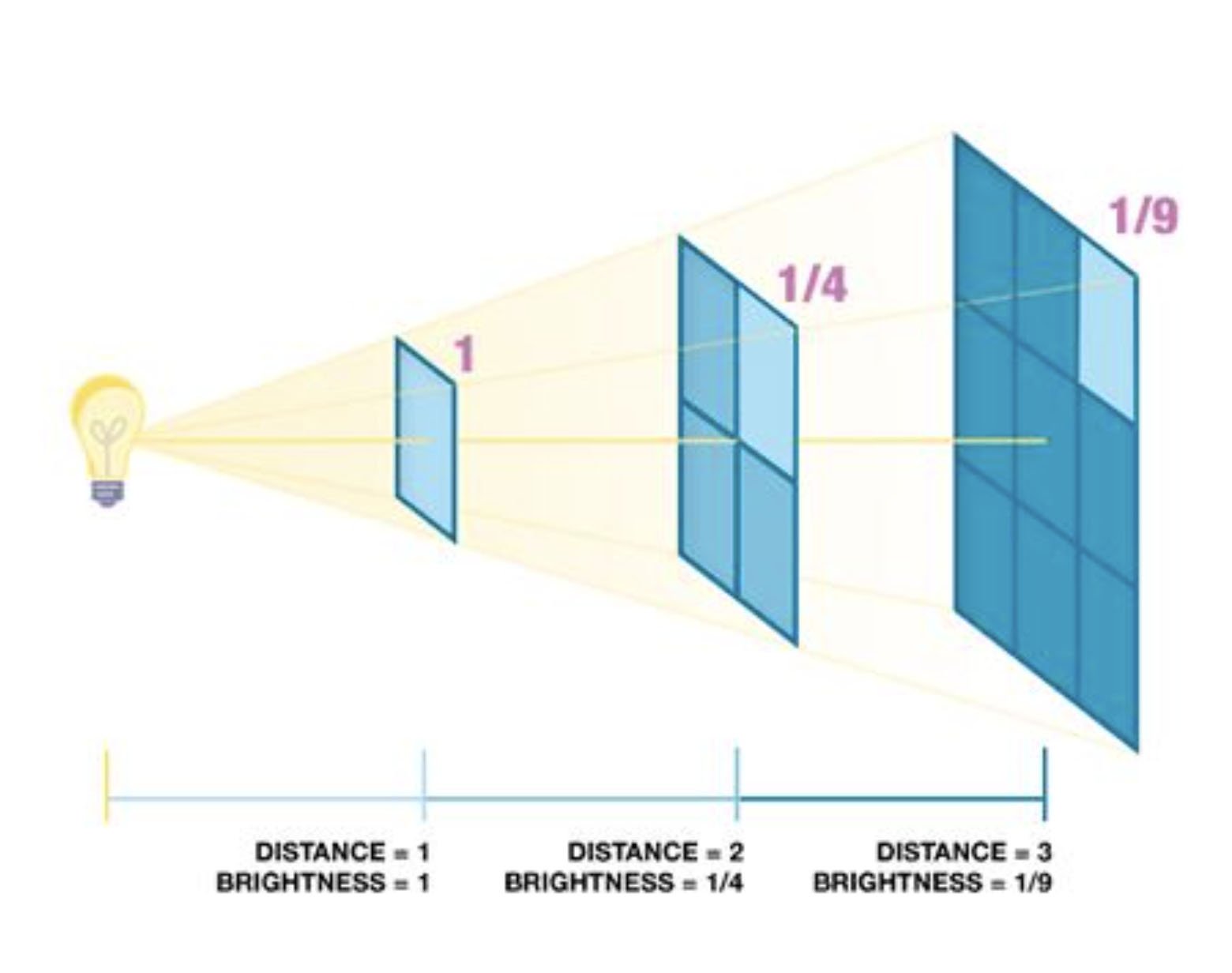
The inverse square law states that the intensity of the laser beam is inversely proportional to the square of the distance from the source. As the distance from the laser source increases, the intensity of the laser decreases exponentially. For example, if you double the distance between a light source and a surface (i.e. a laser beam and a piece of wood), the light intensity at the surface will be one-quarter of what it was before. This principle is essential in understanding how the distance between the lens and the material affects the engraving quality.
In relation to a laser engraving machine, the inverse square law becomes noticeable after the beam has passed through the lens. If the material that is supposed to be engraved is far too out of focus, the beam loses great amounts of energy the further out of focus the material is.
Divergence and Depth of Field
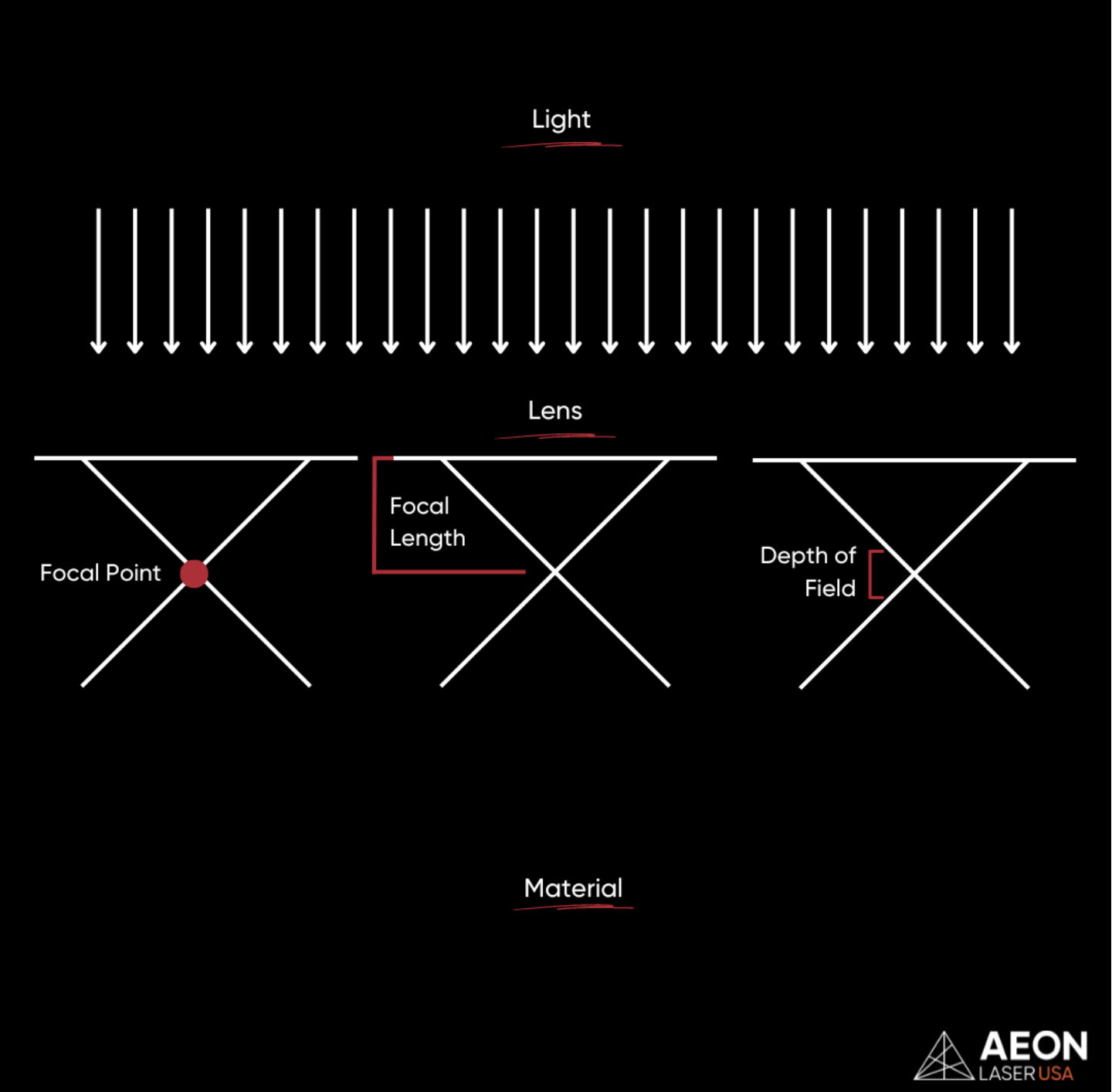
Divergence refers to how much the laser beam spreads out as it travels. A beam with high divergence spreads out more, while a beam with low divergence stays more focused over a longer distance. The focal length of the lens significantly influences the beam's divergence. Shorter focal lengths result in higher divergence, while longer focal lengths produce lower divergence.
Depth of field defines the range over which the laser beam remains adequately focused on the material. If the material's surface moves within this range, the engraving quality will still be acceptable. However, if the surface moves outside this range, the beam diverges too much, resulting in a loss of precision and engraving quality.
Focal Length and Focal Point
The focal length of a lens determines the distance over which the laser beam converges to a point. The point of convergence is the focal point, at which the beam is most intense.
- Shorter focal lengths (e.g., 1.5" to 2") focus the laser beam to a smaller spot size, providing higher detail and resolution, ideal for shallow and detailed engravings.
- Longer focal lengths (e.g., 2.5" to 4") produce a larger focal spot, useful for cutting thicker materials and applications requiring less detail over a larger area.
Lens Diameter
The diameter of a lens affects the amount of laser light that can pass through it and the overall quality of the beam.
- Larger diameter lenses can handle more power and distribute the laser energy more evenly, however, they are generally more expensive.
- Smaller diameter lenses are more cost-effective but may not provide the same level of performance, especially at higher power levels.
Focal Lengths at a Glance
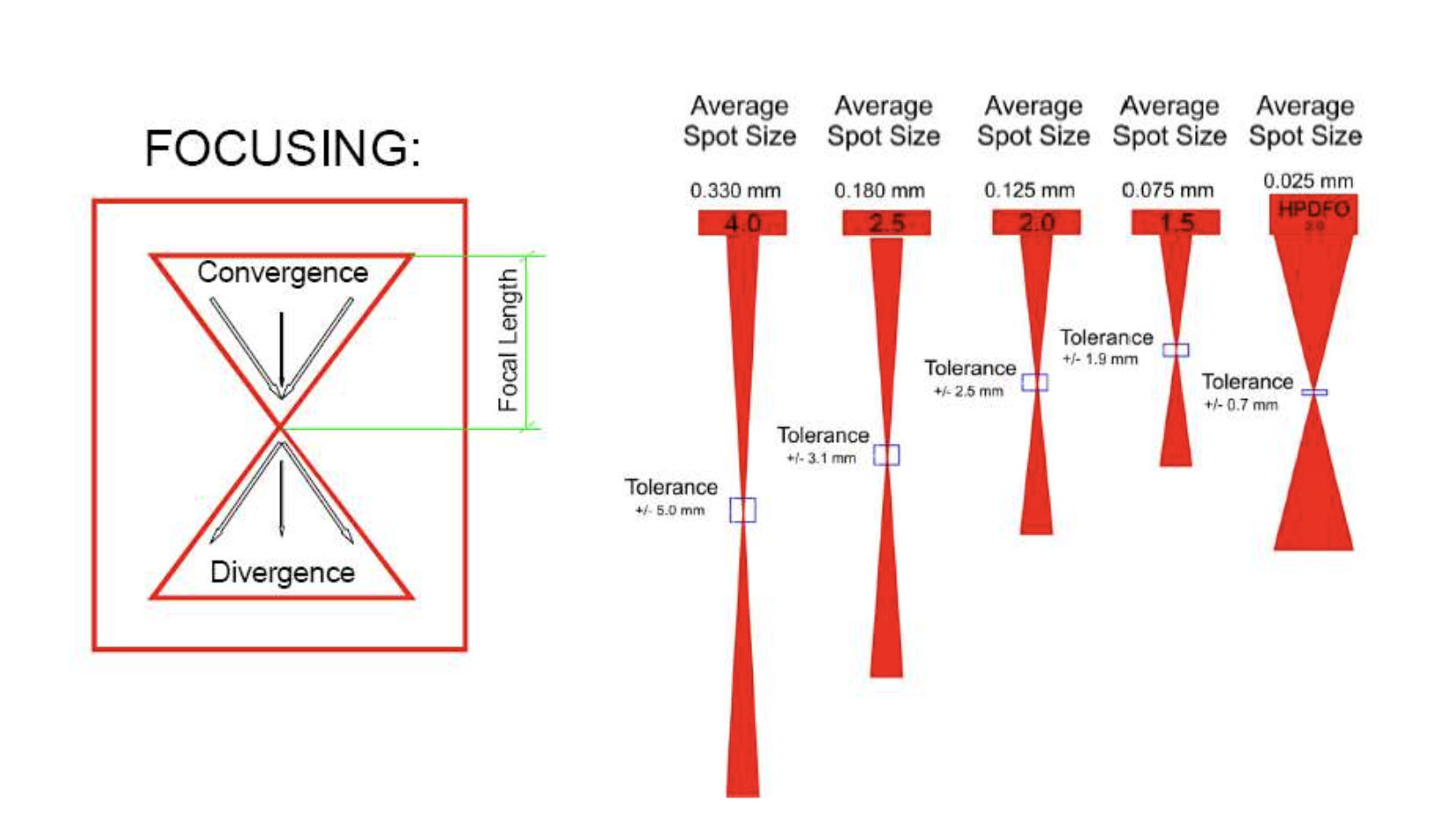
Shorter Focal Length Lenses (1.5" to 2")
Advantages:
- Tighter, more concentrated beam.
- Higher resolution and finer detail.
- Best for shallow, high-detail engravings.
Applications: Ideal for engraving small text, intricate designs, and detailed patterns.
Longer Focal Length Lenses (2.5" to 4")
Advantages:
- Greater depth of focus.
- Lower beam divergence over distance.
- Suitable for cutting thicker materials.
Applications: Best for deeper engravings, cutting applications, and working with thicker materials.
Legacy MIRA Series Lenses
18 x 38.1 mm Focus Lens (1.5")
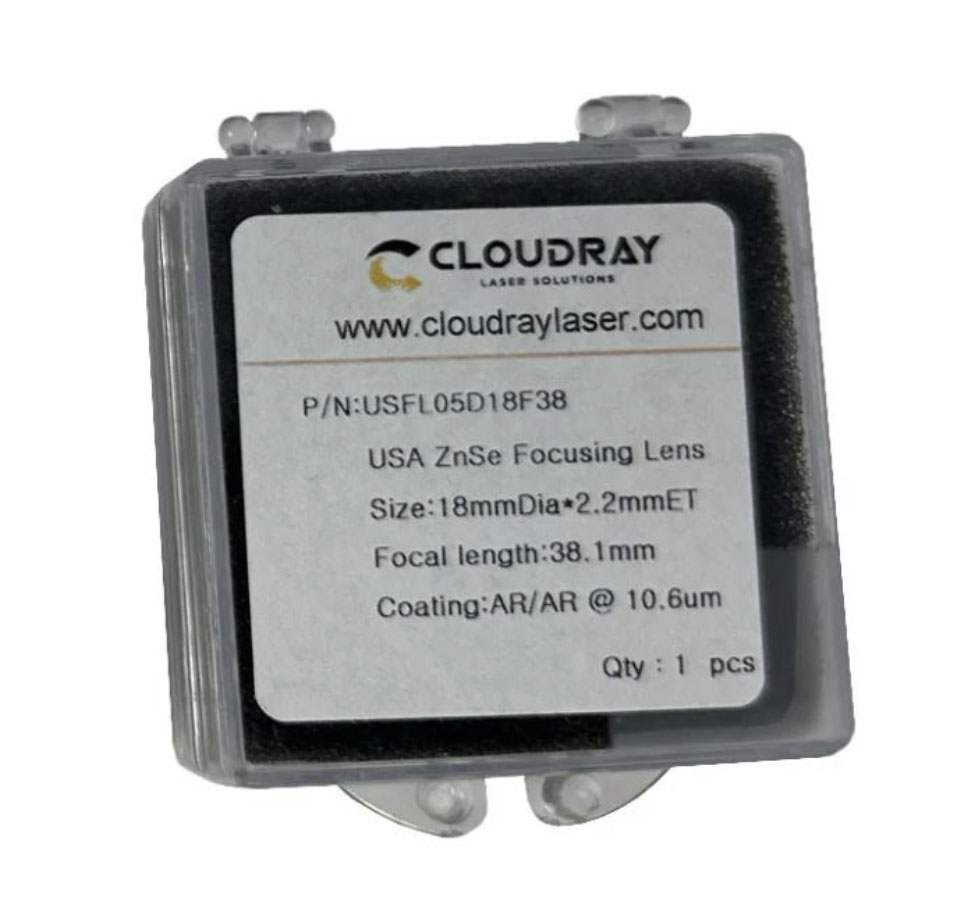
- Compatibility: All Legacy MIRA Models– MIRA5, MIRA7, MIRA9
- Features:
- Diameter: 18 mm
- Diameter tolerance: +0/-0.1 mm
- Edge Thickness: 2 mm
- Focal Length: 38.1 mm
- Focal length tolerance: ±2%
- Wavelength 10.6 um
- Power: 0-200 W
- Transmittance: 99.8%
- Clear aperture (polished): > 90%
- AR coating reflectivity: < 0.2%
- Scratch-dig: 20-10
- Diameter: 18 mm
Benefits: Perfect for high-detail engraving at shorter distances, providing a more concentrated beam.
18 x 50.8 mm Focus Lens (2")
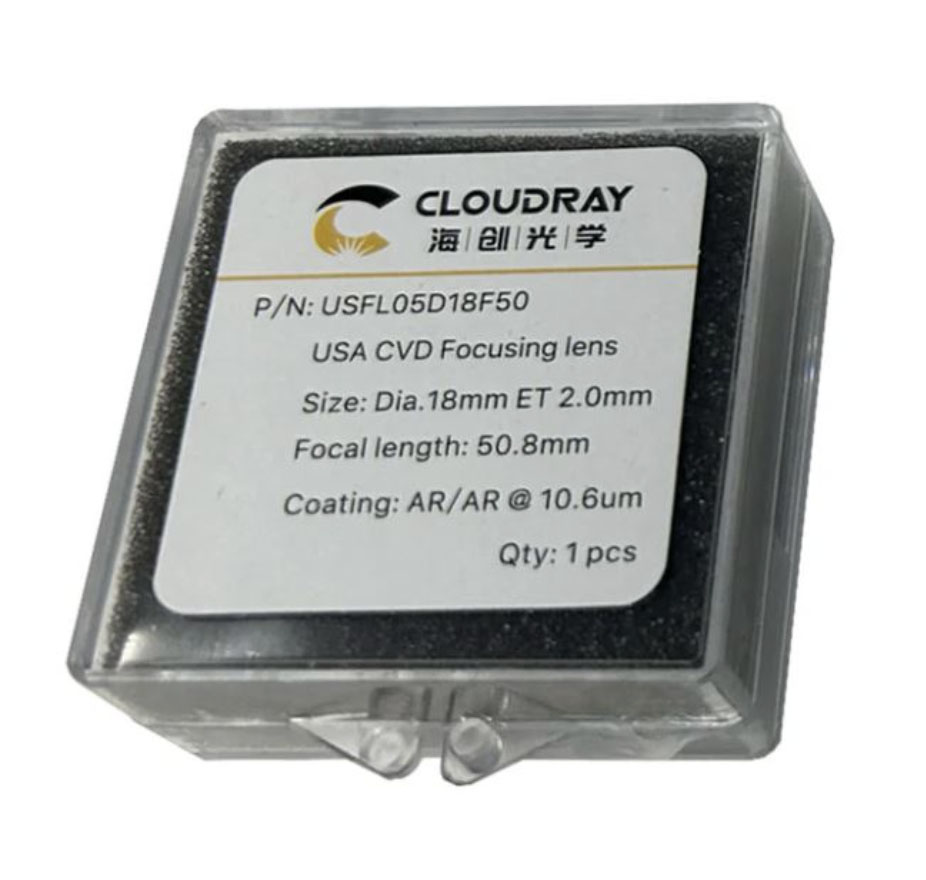
- Compatibility: All Legacy MIRA Models– MIRA5, MIRA7, MIRA9
- Features:
- Diameter: 18 mm
- Diameter tolerance: +0/-0.1 mm
- Edge Thickness: 2 mm
- Focal Length: 50.8 mm
- Focal length tolerance: ±2%
- Wavelength 10.6 um
- Power: 0-200 W
- Transmittance: 99.8%
- Clear aperture (polished): > 90%
- AR coating reflectivity: < 0.2%
- Scratch-dig: 20-10
Benefits: Balances between detail and depth, suitable for general engraving or cutting tasks.
18 x 63.5 mm Focus Lens (2.5”)
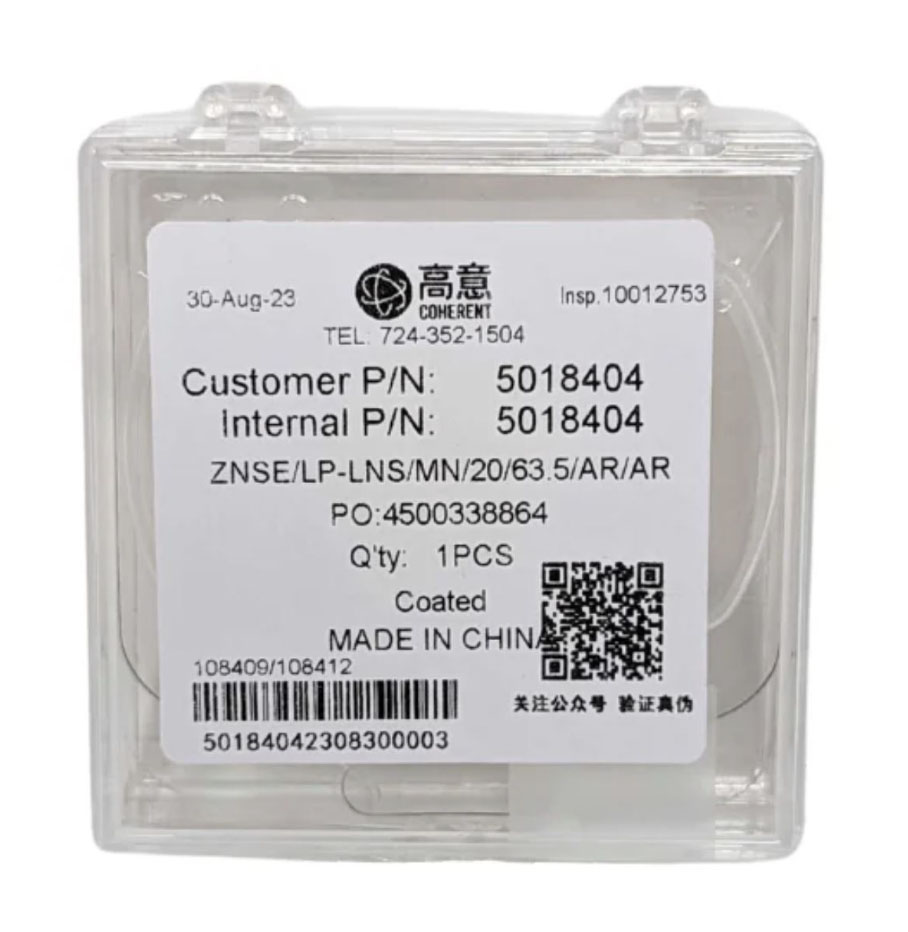
- Compatibility: All Legacy MIRA Models– MIRA5, MIRA7, MIRA9
- Features:
- Diameter: 18 mm
- Diameter tolerance: +0/-0.1 mm
- Edge Thickness: 2 mm
- Focal Length: 63.5 mm
- Focal length tolerance: ±2%
- Wavelength 10.6 um
- Power: 0-200 W
- Transmittance: 99.8%
- Clear aperture (polished): > 90%
- AR coating reflectivity: < 0.2%
- Scratch-dig: 20-10
Benefits: 2.5" lens allows for extra clearance when engraving full wraps on 40oz Stanley tumblers and similar style tumblers.
18 x 101.6 mm Focus Lens (4")
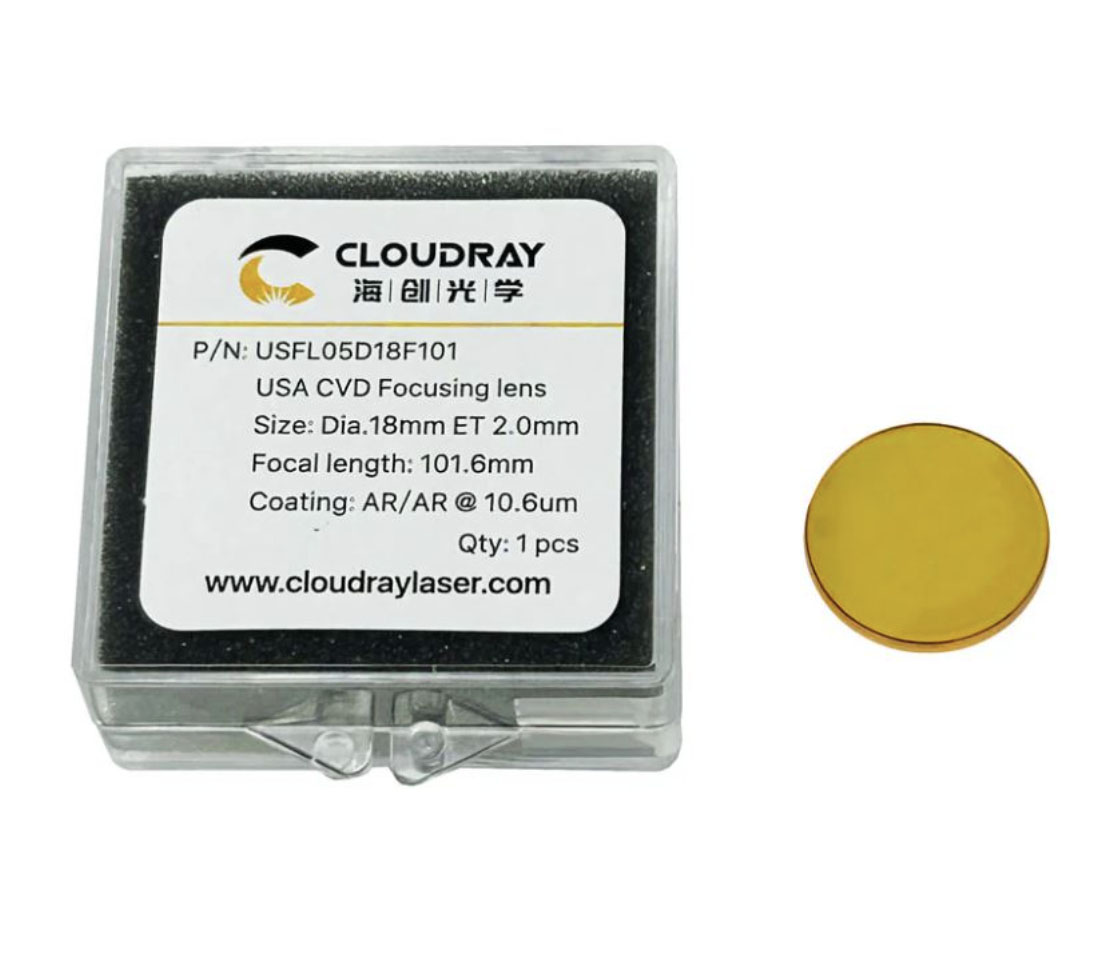
- Compatibility: All Legacy MIRA Models– MIRA5, MIRA7, MIRA9
- Features:
- Diameter: 18 mm
- Diameter tolerance: +0/-0.1 mm
- Edge Thickness: 2 mm
- Focal Length: 101.6 mm
- Focal length tolerance: ±2%
- Wavelength 10.6 um
- Power: 0-200 W
- Transmittance: 99.8%
- Clear aperture (polished): > 90%
- AR coating reflectivity: < 0.2%
- Scratch-dig: 20-10
Benefits: Ideal for cutting thicker materials, or engraving on items that require focus over a longer distance.
REDLINE MIRA, REDLINE NOVA, and Legacy NOVA Series Lenses
20 x 38.1 mm Focus Lens (1.5”)
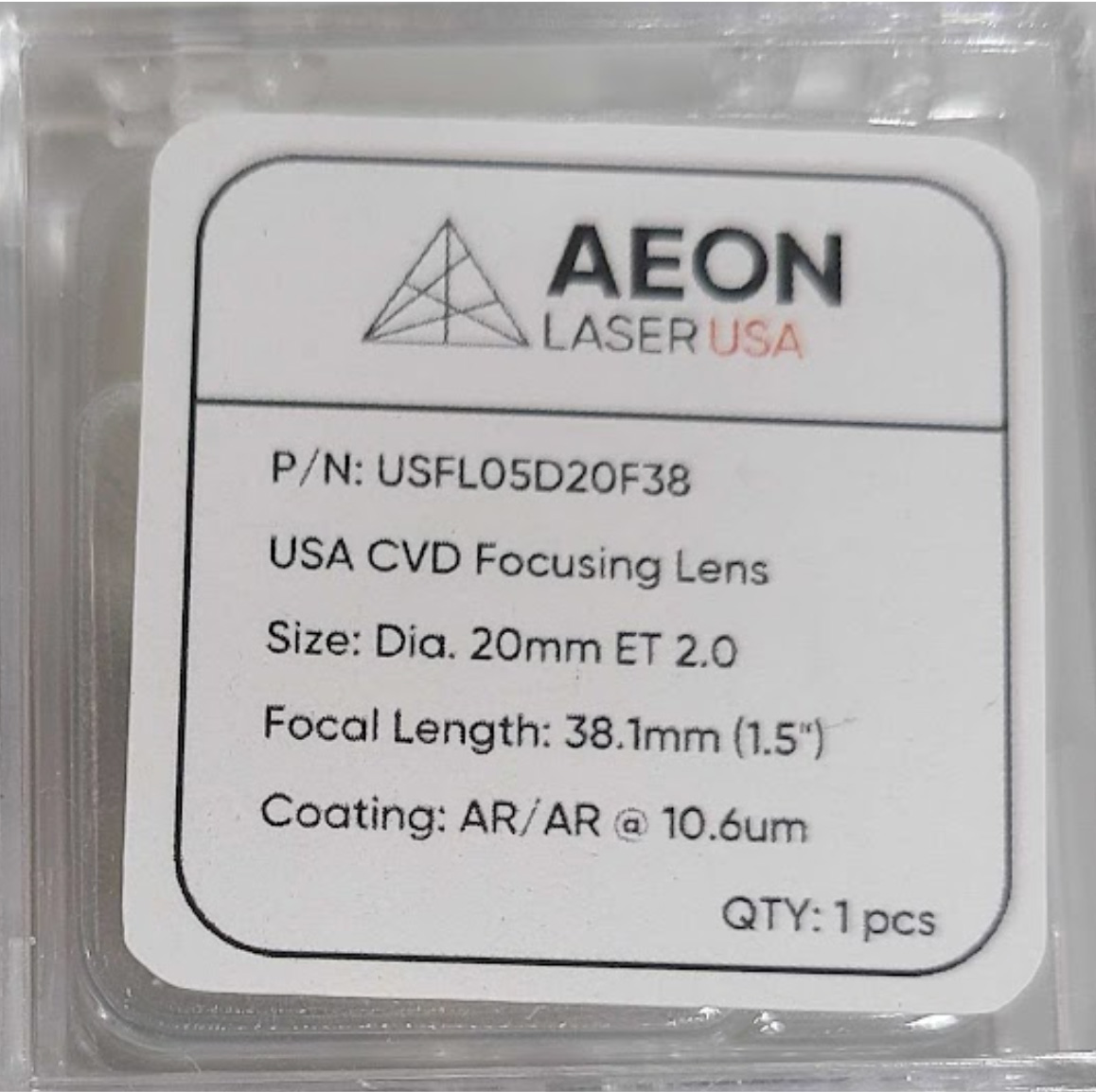
- Compatibility: All REDLINE MIRA models (Not compatible with any NOVA models or Legacy MIRA models)
-
Features:
- Diameter: 20 mm
- Diameter tolerance: +0/-0.1 mm
- Edge Thickness: 2 mm
- Focal Length: 38.1 mm
- Focal length tolerance: ±2%
- Wavelength 10.6 um
- Power: 0-200 W
- Transmittance: 99.8%
- Clear aperture (polished): > 90%
- AR coating reflectivity: < 0.2%
- Scratch-dig: 20-10
20 x 50.8 mm Focus Lens (2”)
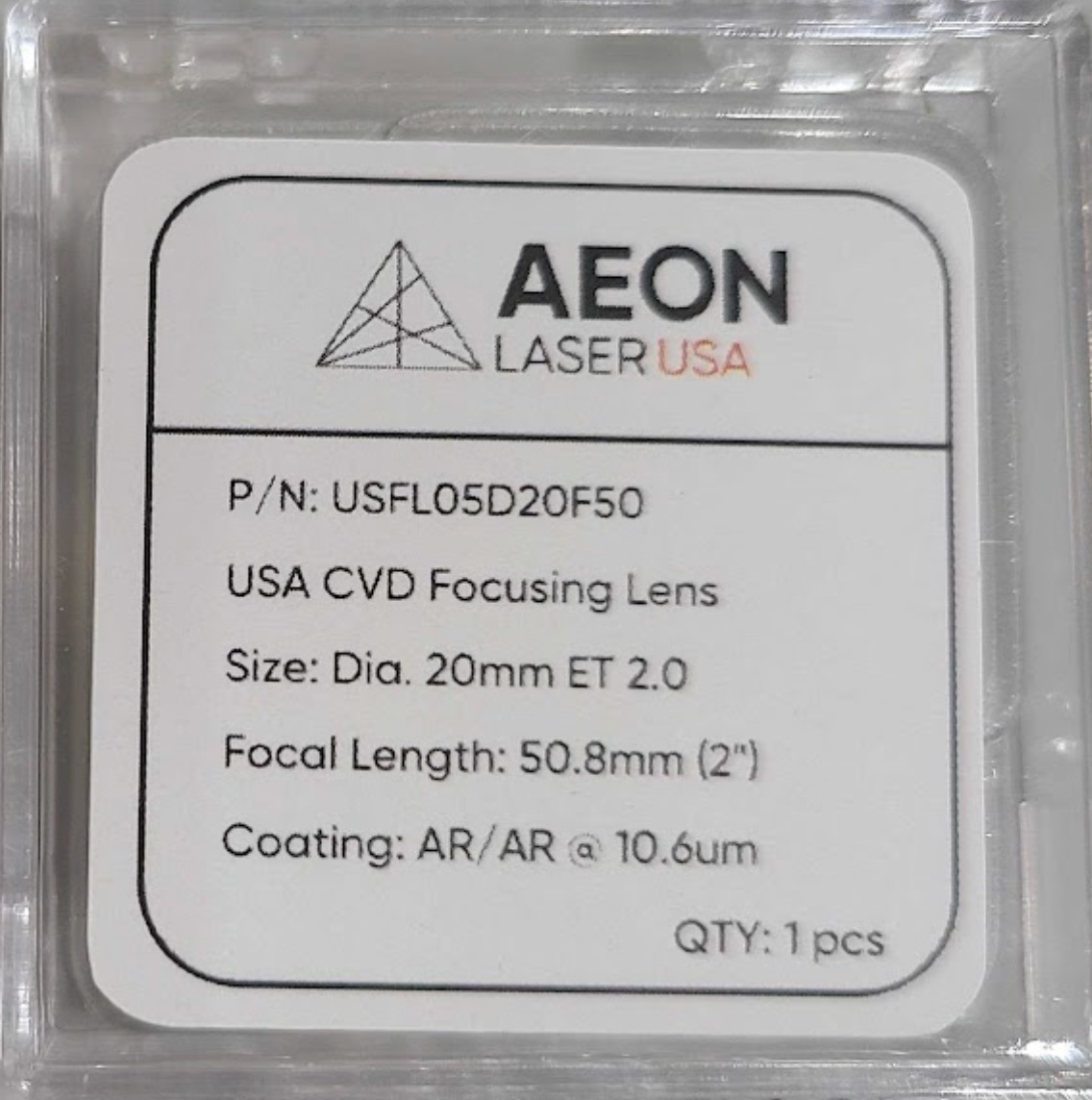
- Compatibility: All REDLINE MIRA and REDLINE NOVA models (Not compatible with Legacy MIRA or Legacy NOVA models)
-
Features:
- Diameter: 20 mm
- Diameter tolerance: +0/-0.1 mm
- Edge Thickness: 2 mm
- Focal Length: 50.8 mm
- Focal length tolerance: ±2%
- Wavelength 10.6 um
- Power: 0-200 W
- Transmittance: 99.8%
- Clear aperture (polished): > 90%
- AR coating reflectivity: < 0.2%
- Scratch-dig: 20-10
20 x 63.5 mm Focus Lens (2.5")
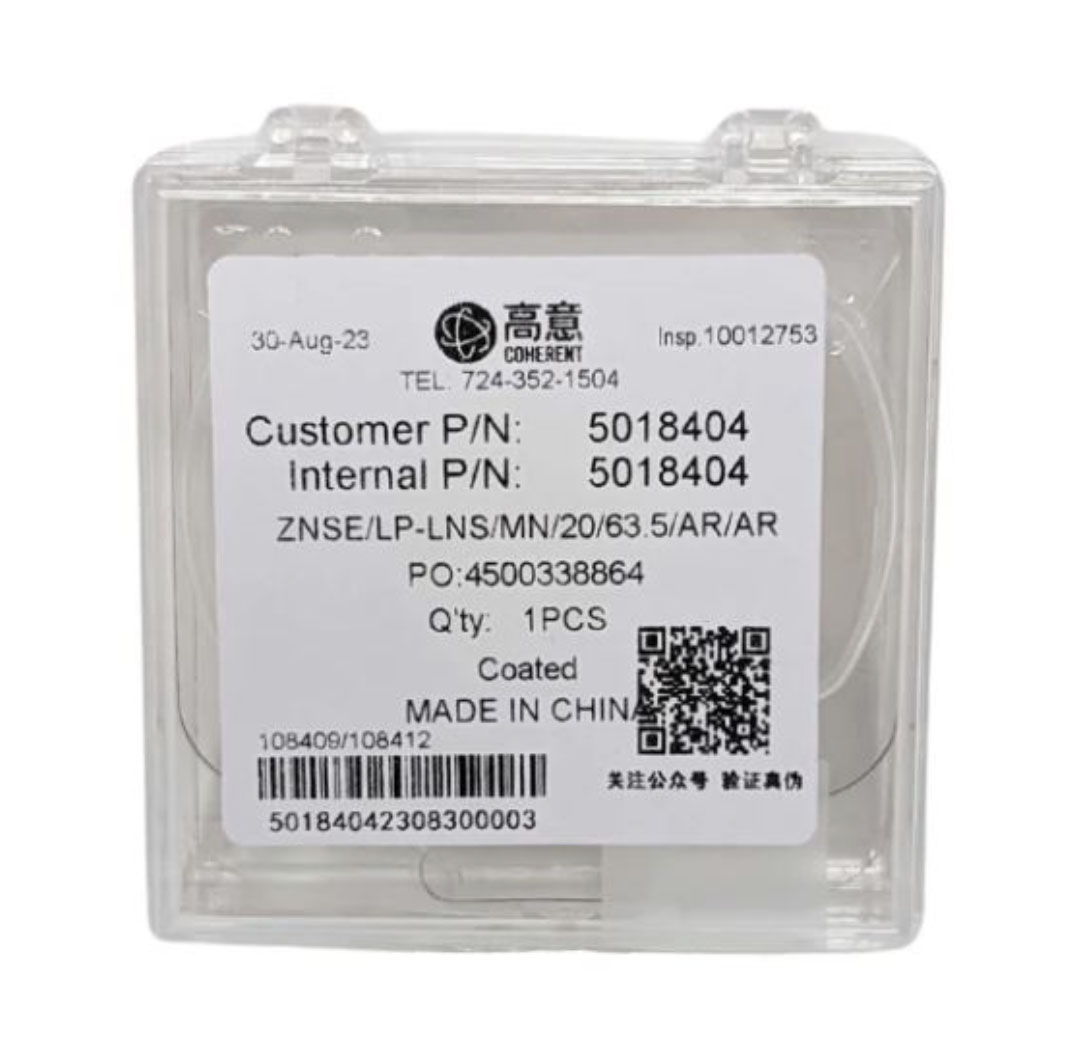
- Compatibility: All REDLINE MIRA and REDLINE NOVA models, Legacy AEON NOVA and SuperNOVA models (Not compatible with Legacy MIRA models)
-
Features:
- Diameter: 20 mm
- Diameter tolerance: +0/-0.1 mm
- Edge Thickness: 2 mm
- Focal Length: 63.5 mm
- Focal length tolerance: ±2%
- Wavelength 10.6 um
- Power: 0-200 W
- Transmittance: 99.8%
- Clear aperture (polished): > 90%
- AR coating reflectivity: < 0.2%
- Scratch-dig: 20-10
Benefits: Offers a compromise between detail and depth, suitable for medium-range engraving tasks.
20 x 101.6 mm Focus Lens (4")
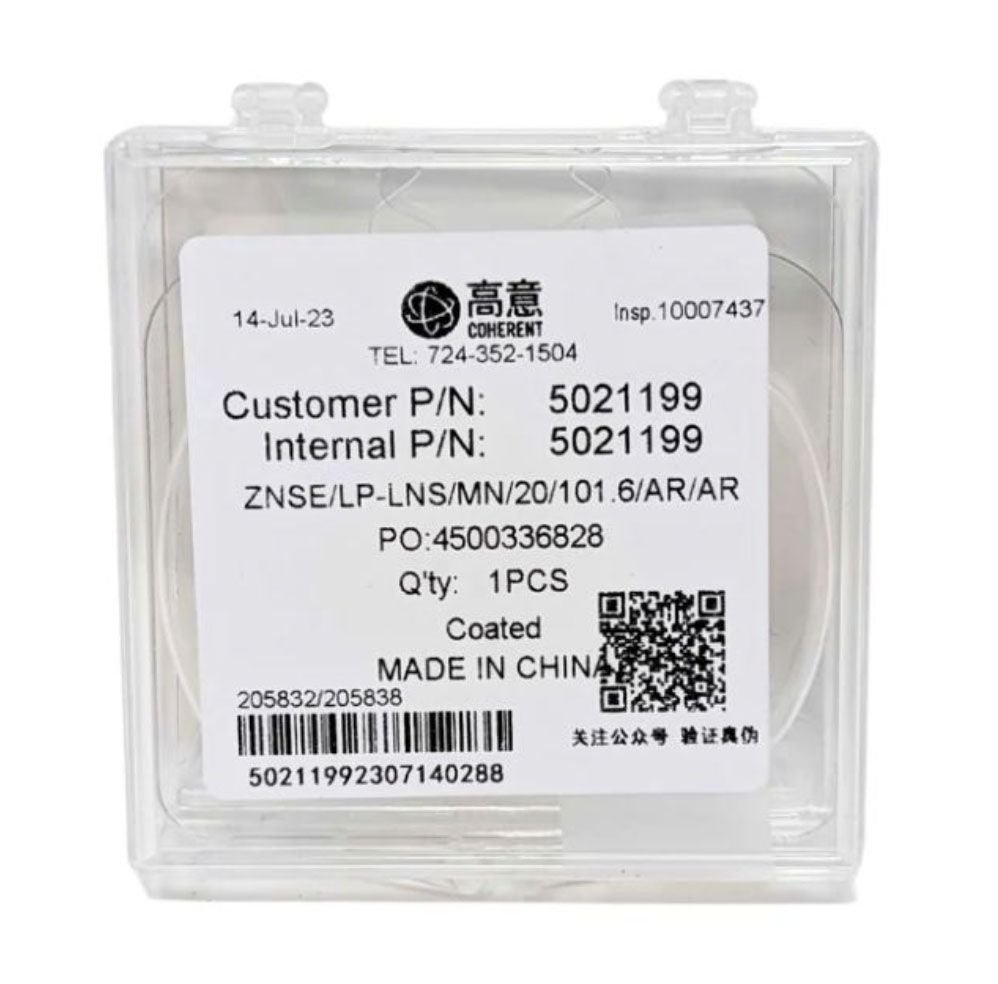
- All REDLINE MIRA and REDLINE NOVA models, Legacy AEON NOVA and SuperNOVA models (Not compatible with Legacy MIRA models)
- Features:
- Diameter: 20 mm
- Diameter tolerance: +0/-0.1 mm
- Edge Thickness: 2 mm
- Focal Length: 101.6 mm
- Focal length tolerance: ±2%
- Wavelength 10.6 um
- Power: 0-200 W
- Transmittance: 99.8%
- Clear aperture (polished): > 90%
- AR coating reflectivity: < 0.2%
- Scratch-dig: 20-10
Benefits: Ideal for cutting thicker materials, or engraving on items that require focus over a longer distance.
Conclusion
Choosing the right lens for your laser is vital in order to maximize your machine's capabilties. By taking the time to better understand the basics covered in this document, you can make informed decisions that ensure your projects are executed with precision and efficiency.
If you have any questions or concerns, please send us an email at support@aeonlaser.us for the fastest service. If your laser is malfunctioning, please submit a support ticket.
Did you find this document helpful? Let us know what you liked or what we can improve on by sending an email to helpusgrow@aeonlaser.us.
Happy Lasering!
DISCLAIMER: AEON LASER USA AND ENGRAVING MACHINES PLUS, CORP ARE NOT RESPONSIBLE FOR ANY DAMAGES OR INJURIES THAT MAY RESULT FROM FOLLOWING THESE SUGGESTIONS. USE CAUTION AT ALL TIMES.




